Hyundai i10 vs SEAT Leon – Which car suits you better?
Compare performance, boot capacity, efficiency and price at a glance.
Find out which car is the better choice for you – Hyundai i10 or SEAT Leon?
Costs and Efficiency:
When it comes to price and running costs, the biggest differences usually appear. This is often where you see which car fits your budget better in the long run.
Hyundai i10 has a significantly advantage in terms of price – it starts at 14600 £, while the SEAT Leon costs 24500 £. That’s a price difference of around 9892 £.
Fuel consumption also shows a difference: SEAT Leon manages with 0.30 L and is therefore convincingly more efficient than the Hyundai i10 with 4.90 L. The difference is about 4.60 L per 100 km.
Engine and Performance:
Power, torque and acceleration say a lot about how a car feels on the road. This is where you see which model delivers more driving dynamics.
When it comes to engine power, the SEAT Leon has a convincingly edge – offering 272 HP compared to 90 HP. That’s roughly 182 HP more horsepower.
In acceleration from 0 to 100 km/h, the SEAT Leon is convincingly quicker – completing the sprint in 7.70 s, while the Hyundai i10 takes 11.40 s. That’s about 3.70 s faster.
In terms of top speed, the SEAT Leon performs noticeable better – reaching 220 km/h, while the Hyundai i10 tops out at 175 km/h. The difference is around 45 km/h.
There’s also a difference in torque: SEAT Leon pulls convincingly stronger with 360 Nm compared to 172 Nm. That’s about 188 Nm difference.
Space and Everyday Use:
Cabin size, boot volume and payload all play a role in everyday practicality. Here, comfort and flexibility make the difference.
Both vehicles offer seating for 5 people.
In curb weight, Hyundai i10 is evident lighter – 996 kg compared to 1344 kg. The difference is around 348 kg.
In terms of boot space, the SEAT Leon offers distinct more room – 380 L compared to 252 L. That’s a difference of about 128 L.
In maximum load capacity, the SEAT Leon performs a bit better – up to 1301 L, which is about 251 L more than the Hyundai i10.
When it comes to payload, SEAT Leon somewhat takes the win – 521 kg compared to 423 kg. That’s a difference of about 98 kg.
Who wins the race?
The SEAT Leon proves to be outperforms in nearly all aspects and therefore becomes our DriveDuel Champion!
SEAT Leon is the better all-rounder in this comparison.
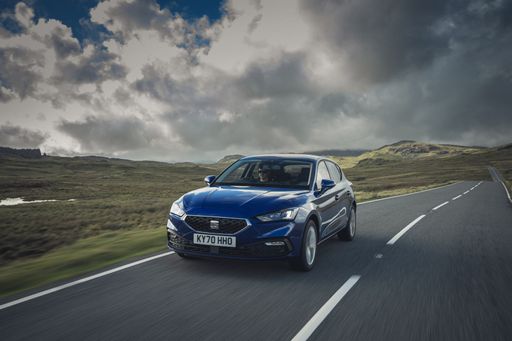 @ seatmedia
@ seatmedia
SEAT Leon
Hyundai i10
The Hyundai i10 impresses with its compact design, making it an ideal choice for navigating through busy urban environments. Its interior is surprisingly spacious, offering drivers and passengers comfort beyond what one might expect from a city car. The model combines efficiency and practicality, making it an attractive option for those seeking both economy and functionality in their daily commute.
details @ hyundai.news
@ hyundai.news
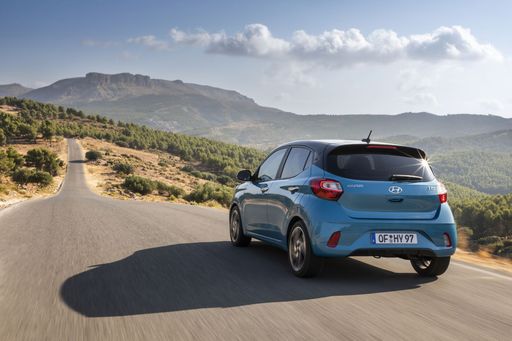 @ hyundai.news
@ hyundai.news
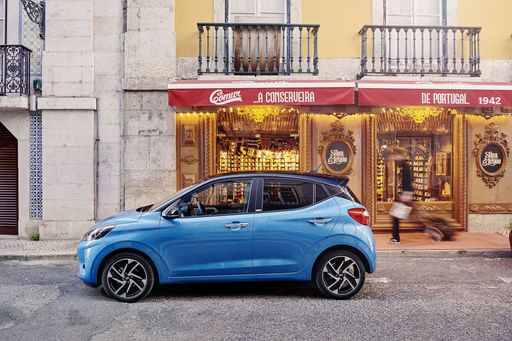 @ hyundai.news
@ hyundai.news
 @ hyundai.news
@ hyundai.news
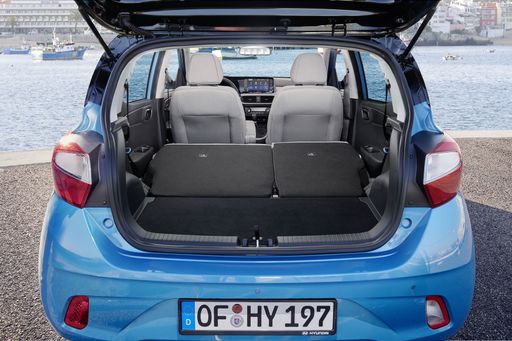 @ hyundai.news
@ hyundai.news
SEAT Leon
The SEAT Leon impresses with its dynamic design and sporty edge, making it a standout choice in its class. Its interior is characterised by a modern, driver-focused cockpit that combines functionality with an emphasis on comfort. The car delivers a responsive driving experience, thanks to its advanced engineering and agile handling capabilities.
details @ seatmedia
@ seatmedia
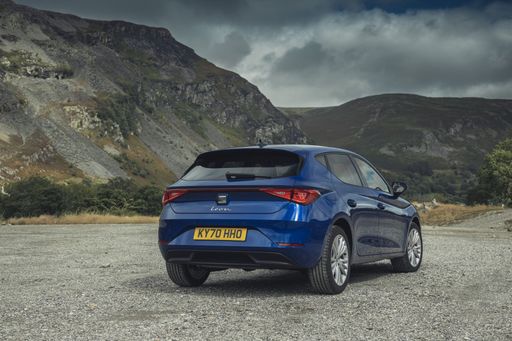 @ seatmedia
@ seatmedia
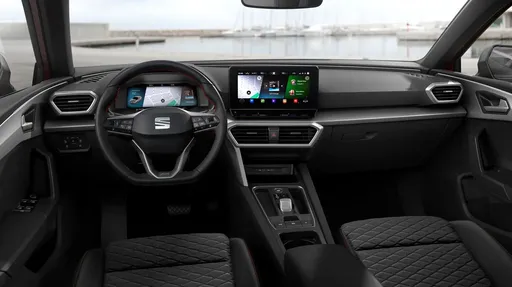 @ seatmedia
@ seatmedia
 @ seatmedia
@ seatmedia
 @ hyundai.news
@ hyundai.news
|
 @ seatmedia
@ seatmedia
|
|
|
|
Costs and Consumption |
|
|---|---|
|
Price
14600 - 19000 £
|
Price
24500 - 36400 £
|
|
Consumption L/100km
4.9 - 5.5 L
|
Consumption L/100km
0.3 - 5.7 L
|
|
Consumption kWh/100km
-
|
Consumption kWh/100km
-
|
|
Electric Range
-
|
Electric Range
133 - 134 km
|
|
Battery Capacity
-
|
Battery Capacity
19.70 kWh
|
|
co2
110 - 124 g/km
|
co2
7 - 129 g/km
|
|
Fuel tank capacity
36 L
|
Fuel tank capacity
40 - 45 L
|
Dimensions and Body |
|
|---|---|
|
Body Type
Hatchback
|
Body Type
Hatchback
|
|
Seats
4 - 5
|
Seats
5
|
|
Doors
5
|
Doors
5
|
|
Curb weight
996 - 1099 kg
|
Curb weight
1344 - 1670 kg
|
|
Trunk capacity
252 L
|
Trunk capacity
270 - 380 L
|
|
Length
3670 - 3675 mm
|
Length
4368 mm
|
|
Width
1680 mm
|
Width
1799 mm
|
|
Height
1480 - 1483 mm
|
Height
1442 - 1460 mm
|
|
Max trunk capacity
1050 L
|
Max trunk capacity
1187 - 1301 L
|
|
Payload
344 - 423 kg
|
Payload
460 - 521 kg
|
Engine and Performance |
|
|---|---|
|
Engine Type
Petrol
|
Engine Type
Petrol, Petrol MHEV, Diesel, Plugin Hybrid
|
|
Transmission
Manuel, Automatic
|
Transmission
Manuel, Automatic
|
|
Transmission Detail
Manual Gearbox, Automated Manual
|
Transmission Detail
Manual Gearbox, Dual-Clutch Automatic
|
|
Drive Type
Front-Wheel Drive
|
Drive Type
Front-Wheel Drive
|
|
Power HP
63 - 90 HP
|
Power HP
110 - 272 HP
|
|
Acceleration 0-100km/h
11.4 - 18.4 s
|
Acceleration 0-100km/h
7.7 - 10.5 s
|
|
Max Speed
143 - 175 km/h
|
Max Speed
197 - 220 km/h
|
|
Torque
93 - 172 Nm
|
Torque
220 - 360 Nm
|
|
Number of Cylinders
3 - 4
|
Number of Cylinders
4
|
|
Power kW
46 - 66 kW
|
Power kW
85 - 200 kW
|
|
Engine capacity
998 - 1197 cm3
|
Engine capacity
1498 - 1968 cm3
|
General |
|
|---|---|
|
Model Year
2024
|
Model Year
2024 - 2025
|
|
CO2 Efficiency Class
C, D
|
CO2 Efficiency Class
D, B
|
|
Brand
Hyundai
|
Brand
SEAT
|
Is the Hyundai i10 offered with different drivetrains?
The Hyundai i10 is offered with Front-Wheel Drive.
The prices and data displayed are estimates based on German list prices and may vary by country. This information is not legally binding.
